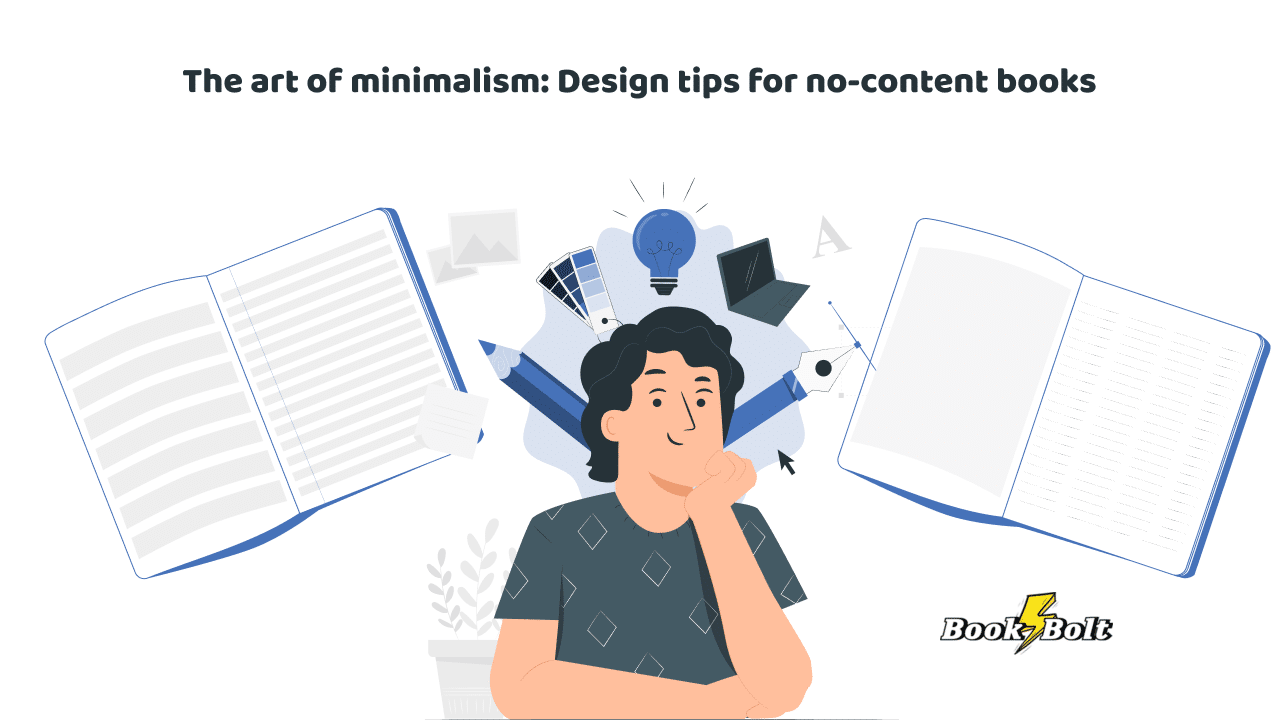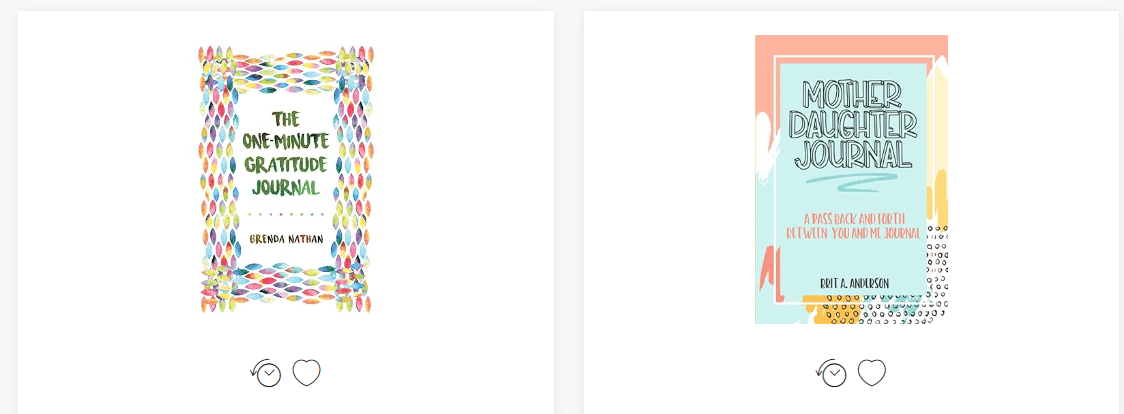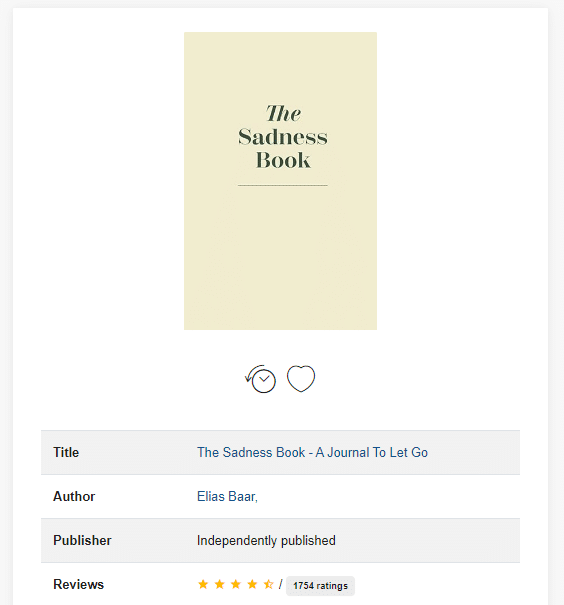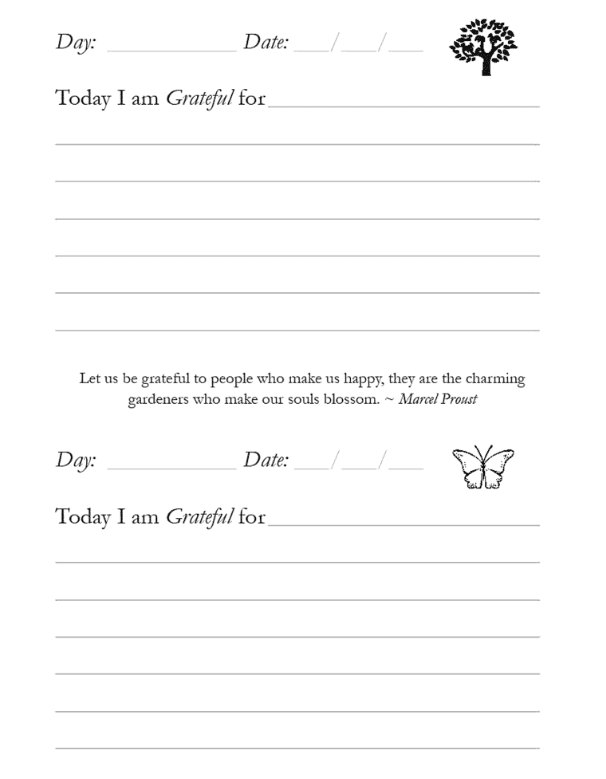
In a world inundated with information, minimalism has emerged as a design philosophy that celebrates simplicity, clarity, and purpose.
No-content books on Amazon KDP embody the essence of minimalism in a tangible form. They are a canvas for creativity, a space for self-expression, and a stylish addition to your bookshelf.
In this article, we’ll explore the art of minimalism in designing no-content books, offering tips and insights on creating stunning, purposeful, and aesthetically pleasing blank books.
The no-content book category on Amazon KDP
Before diving into practical design tips, let’s explore how no-content books are positioned on the Amazon KDP market.
There are several types of no-content books, including:
- Notebooks
- Journals
- Music sheets
- Sketch books
While these items are fundamentally different, they all share one common denominator – zero content.

From a seller’s perspective, this means that creating eye-grabbing covers and interiors is fundamental for performance.
In the sections below, we show you how to do this.
No-content books tips: Crafting designs that sell
Using Book Bolt, we researched the top-performing no-content books on Amazon KDP.
Surprisingly, we uncovered that the majority of best-selling covers are simplistic. They target the audience with precision, utilizing appropriate colors, elements, and fonts.
While design isn’t the only factor that influences your listing performance, it undoubtedly plays a crucial role.
Here are several key tips for creating attractive minimalistic designs for your no-content books.
Cover design: Less is more
The cover of your no-content book is more than just an introduction; it’s the essence of your creation, setting the tone for what lies within.
Embracing minimalism in your cover design can make a profound impact. To achieve this, it’s essential to understand what minimalism is all about.
This design principle represents simplicity and elegance. When designing your no-content book cover opt for clean, uncluttered graphic representations.
Avoid unnecessary embellishments or distractions that might dilute the visual impact.
Choose a color palette that evokes calmness and sophistication. Earthy tones, soft pastels, or a monochromatic scheme can create a soothing visual experience.

Book interior: Balance and consistency
While the cover is what makes the first impression, the interior is what convinces buyers to make a purchase decision.
In other words, the internal layout is where minimalism truly shines.
To create a successful minimal interior for your no-content books, employ grids (where possible) to maintain consistency in spacing and alignment. This will enable you to create a sense of order and balance.
However, keep in mind that grids won’t be appropriate for all no-content book categories.
In addition, embrace whitespace to allow elements to breathe. This technique will help your books promote focus and clarity, making the product visually appealing.
Typography: Choose wisely
Typography plays a pivotal role in no-content books and can make or break your book covers.
To achieve minimalism in your titles, opt for clean, sans-serif or classic serif fonts. Use a limited number of styles for consistency and avoid overly ornate or decorative fonts that can clutter the design.
Establish a clear typographic hierarchy with font sizes, spacing, and styles. Make sure your book’s title stands out without overpowering the overall design.

Themes and purpose: Define your focus
Whether you’re creating an art sketchbook, a gardening journal, or any other type of no-content book, incorporating thematic elements will enrich the user’s journey.
Let’s look at a few examples.
If your book theme is urban sketching, you can include cityscape silhouettes, sketches of iconic landmarks, or subtle hints of an urban environment in the cover or section dividers.
On the other hand, for a gardening journal, infuse the design with botanical motifs, leafy patterns, or images of garden tools. This creates a visual connection between the book and the act of gardening.

Make sure that these extra components are gently interwoven into your book, achieving a minimalist look and feel.
Customization: Personalize the experience
Customization is the secret ingredient that can transform a seemingly blank canvas into a highly personalized and emotionally resonant product.
For example, allowing customers to tailor the covers of their no-content books elevates the emotional connection they have with the item.
Offer the option for shoppers to add their names, favorite quotes, or personal mantras to the cover. This simple customization instantly makes the book uniquely theirs and infuses it with meaning.
Say you plan to sell gratitude journals. Allowing customers to individualize the product with their name and a preferred inspirational quote can transform it into a daily source of motivation and reflection.
In addition, play around with size. Offering a range of sizes for your no-content books demonstrates your commitment to meeting diverse preferences and needs.
For instance, smaller, pocket-sized options are perfect for on-the-go users who want to carry their journal, planner, or sketchbook with them wherever they roam.
On the other hand, standard and larger sizes are ideal for those who prefer ample space for creativity, writing, or planning, offering a versatile canvas for their ideas.
Consider even more extreme sizes, such as mini notebooks that fit in the palm of your hand or jumbo sketchbooks for those who crave an expansive canvas for their artistry.
Real-life examples from the bestsellers
No-content books, when designed with a minimalist approach, can become vessels for inspiration, creativity, and mindfulness. These meticulously crafted products encourage users to slow down, connect with their thoughts, and engage with the physical world.
But let’s look at a few top-performing minimalistic no-content book listings that shine with success.
The first example is the “Calligraphy Practice Paper Notebook: Calligraphy Practice Paper and Workbook for Beginners | Hand Lettering and Modern Calligraphy Practice Sheets for … Book Gifts | Minimal Black Cover (120 Pages)” listing. It is the number one bestseller in the notebook category for the minimalism theme.

The second top-performer we identified is “Bible Verse Journal Gift Idea For Christian Minimal Religious Notebook 6×9 – Your word is a lamp to my feet and a light to my path: Prayer journal and bible study notebook”. This book is positioned in two categories – notebooks and journals. And unlike the previous example, it represents a second theme in addition to minimalism – religion.
The item sells for $5.96, has a BSR of 262,853, and generates roughly 140 sales per month.
In terms of design, the cover page is completely white. The only thing that catches the eye is the quote “Your world is a lamp to my feet and a light to my path”.
These two examples demonstrate how a minimalistic design can result in fruitful sales and financial gains.
In a nutshell
In conclusion, the art of minimalism in designing no-content books is a testament to the power of thoughtful design and purposeful simplicity.
Use the tips from above to embrace minimalism and transform blank pages into beautiful canvases for expression and inspiration. Remember, in the world of design, simplicity often speaks volumes.